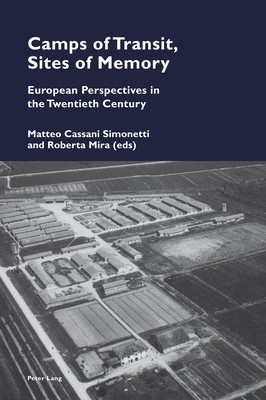
- We will send in 10–14 business days.
- Publisher: Peter Lang Ltd, International Academic Publishers
- ISBN-10: 1800793898
- ISBN-13: 9781800793897
- Format: 15.2 x 22.9 x 1.8 cm, minkšti viršeliai
- Language: English
- SAVE -10% with code: EXTRA
Camps of Transit, Sites of Memory (e-book) (used book) | bookbook.eu
Reviews
Description
Camps and places of transit assume relevance in certain contexts and in relation to specific events of the contemporary age: from genocide to voluntary or forced migration, from camps for prisoners of war to the management of refugees in conflicts or catastrophes. In the phases of transition to normality that follow such events, places of transit can be used for different, sometimes opposing purposes, such as the control and/or elimination of certain social groups, or as the protection of persons for humanitarian aims.
This volume investigates the relationship between camps and places of transit from three main perspectives: the history of transit camps in various countries and times; the relationship between such spaces, whose architectural characterization is fragile and difficult to recognize, and the great memorial and symbolic relevance of them; and, finally, the concepts of transit and camp, and changes in the meaning of such places and the memorial and educational practices related to them.
EXTRA 10 % discount with code: EXTRA
The promotion ends in 21d.22:06:21
The discount code is valid when purchasing from 10 €. Discounts do not stack.
- Publisher: Peter Lang Ltd, International Academic Publishers
- ISBN-10: 1800793898
- ISBN-13: 9781800793897
- Format: 15.2 x 22.9 x 1.8 cm, minkšti viršeliai
- Language: English English
Camps and places of transit assume relevance in certain contexts and in relation to specific events of the contemporary age: from genocide to voluntary or forced migration, from camps for prisoners of war to the management of refugees in conflicts or catastrophes. In the phases of transition to normality that follow such events, places of transit can be used for different, sometimes opposing purposes, such as the control and/or elimination of certain social groups, or as the protection of persons for humanitarian aims.
This volume investigates the relationship between camps and places of transit from three main perspectives: the history of transit camps in various countries and times; the relationship between such spaces, whose architectural characterization is fragile and difficult to recognize, and the great memorial and symbolic relevance of them; and, finally, the concepts of transit and camp, and changes in the meaning of such places and the memorial and educational practices related to them.


Reviews